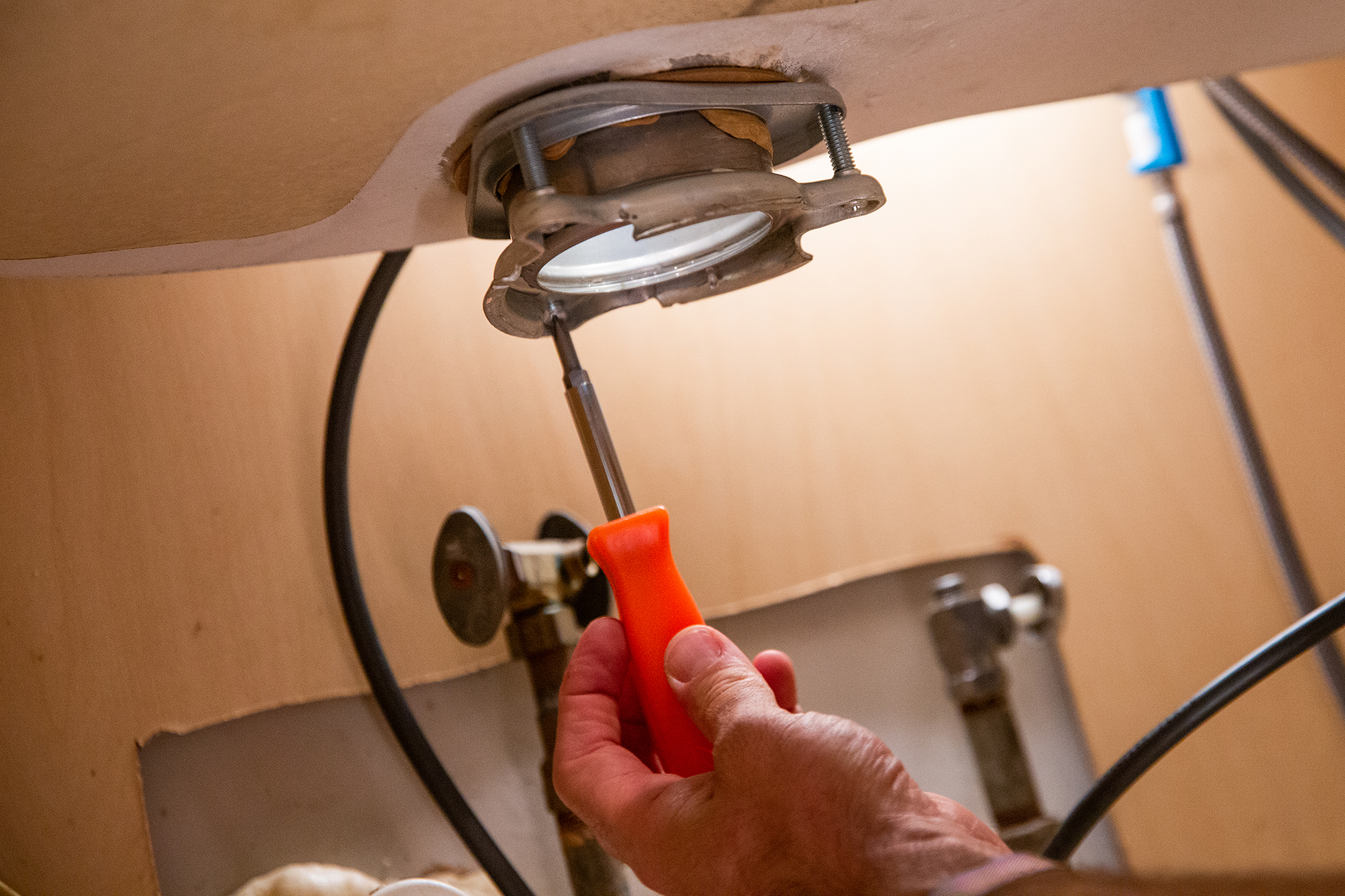
Set a flashlight in place to provide sufficient light while you work. Then, follow the instructions below to remove the old unit to prep for installing a new garbage disposal: Clear out the space underneath your kitchen sink and lay down an old towel to catch any water drips.

/disconnect_disposal-56a73b9a3df78cf772938120.jpg)
While the process can vary depending on the existing model and the replacement, it’s generally a fairly straightforward procedure. Understand the basic process of replacing a garbage disposal. If you aren’t sure which circuit breaker powers your garbage disposal, turn on the disposal (or the dishwasher, if the disposal is completely nonfunctional) and flip the circuits one by one until you hit the one that shuts off the disposal. Then switch off the electricity to the garbage disposal head to your home’s main circuit-breaker box (often, the appliance shares a circuit with the dishwasher). First, unplug the garbage disposal (the outlet is most likely underneath the kitchen sink but may be on the wall by the countertop). Shut off the electricity before getting started.Īs with any repair or replacement of an appliance powered by electricity, don’t do a thing until you’ve shut off the power. For most folks, a garbage disposal in the $75 to $100 range has sufficient power and longevity to handle typical kitchen demands.Ĥ. At the high end, about $200, you’ll get a powerful, reasonably quiet appliance with stainless-steel components, that has a several-year warranty and, often, an auto-reverse start, which means that the blades first whirl in one direction, and then reverse, to avoid most problems with jams. Never stick your fingers into a garbage disposal: Those blades are sharp! After unclogging the garbage disposal, turn it on and give it a try if it still only hums, it requires a replacement.Ī new garbage disposal can cost as little as $50-although at that low a price, you’ll get a small, low-powered device likely to struggle grinding up much beyond the softest of scraps. If you spot a stray utensil, peach pit, or another blockage, or there is a lot of fibrous waste, such as celery, wrapped around the blades, cut the power to the appliance and use a long fork or pair of pliers to retrieve the offending item. Use a flashlight to look down into the unit. If, when you flick the switch, the disposal’s motor hums, but the blades don’t turn, chances are the blades are jammed.Turn on the disposal if it’s still silent and still, it’s time for a replacement. Locate the little red button on the bottom of the unit and push it to reset the circuit. If the device is securely plugged in, it’s possible that the built-in circuit has tripped. If you flick the power switch and nothing happens, check the outlet, usually located underneath the sink, where it’s easy for the plug to be accidentally dislodged while accessing supplies stored in this space.There are two troubleshooting avenues to try, depending on how the unit is malfunctioning:

Often, when a garbage disposal stops working, it isn’t actually on the fritz. Make sure the garbage disposal is truly broken. RELATED: 15 Things Never to Put Down Your Garbage Disposal 1. Here’s what you need to know before heading down under the kitchen sink.
How to remove a garbage disposal install#
Before calling a plumber to install a new one, consider replacing the unit yourself-a fairly easy DIY project for anyone with some experience using basic tools such as screwdrivers, pliers, and putty.
How to remove a garbage disposal full#
Uh oh! You turn on the tap, flick the switch, and after a groan your garbage disposal goes silent, leaving you with a sink full of scraps.


 0 kommentar(er)
0 kommentar(er)
